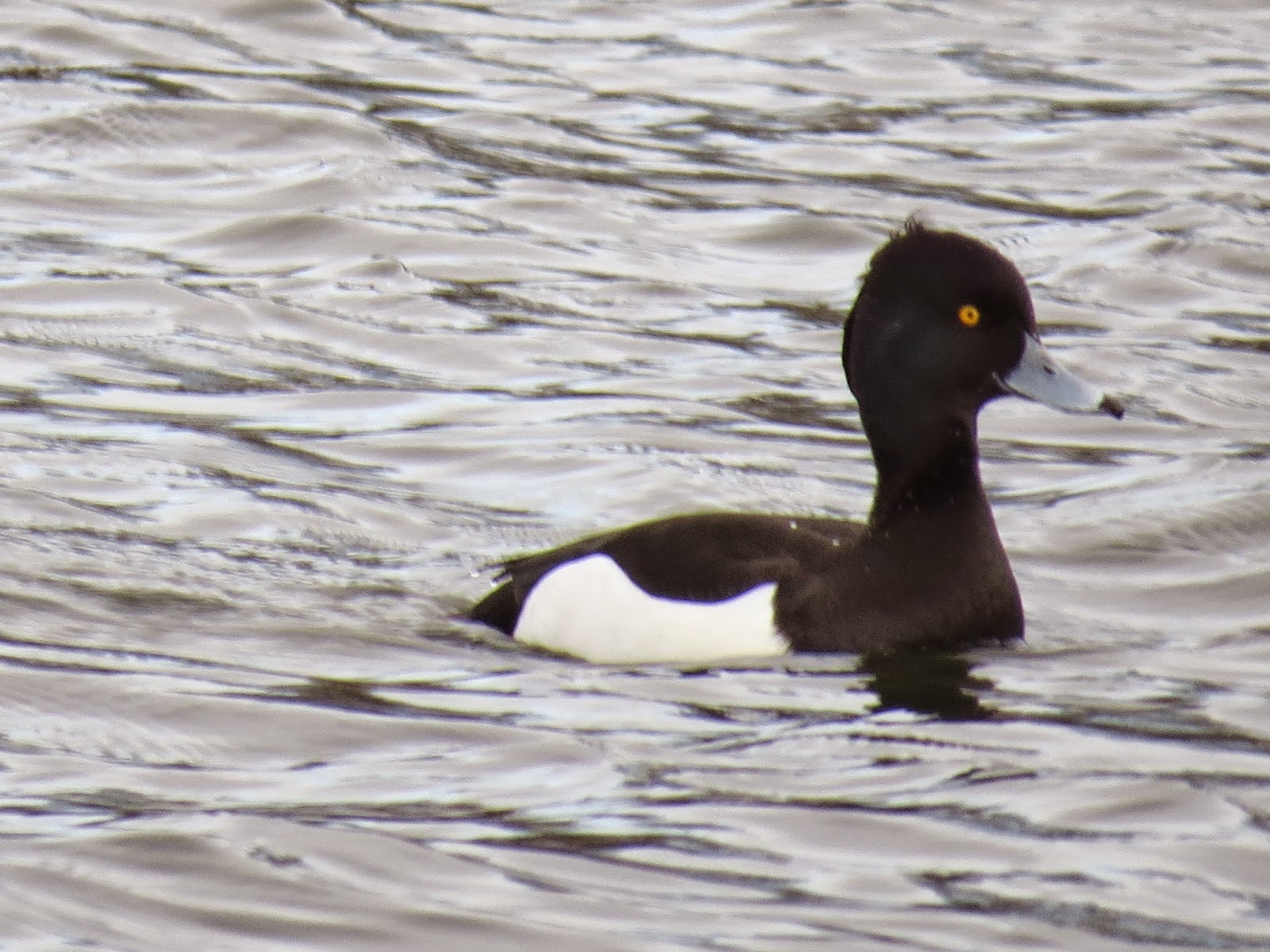Drawing wildlife will help you learn about them. It teaches you their anatomy and the details that defines each species in order to identify them. Drawing has a lot of benefits. But for many people, drawing can be off putting. It takes years of practice to be an artist, but less to be a good enough drawer. In fact, anyone can draw if they put their mind to it. So today, I have decided to give you a few tips in drawing garden birds. All you need is paper, a pencil, a pen (I use a biro) and some colouring pencils. It is easy. Why not draw along with me?
 |
| Stage One |
First, draw a rough circle for the head and an oval for the body. This is the basic way to start a bird drawing and it is like the drawing's skeleton. Don't worry about it looking like anything at this stage, it is only there to mark out the basic shape and size of your drawing. You can make the bird face any direction and have a big or small head or body depending on what bird you are drawing.
 |
| Stage Two |
Next, using the shapes you have roughly drawn as a guide, draw the basic structure of the bird. Make a triangular shape for the bill and wings, a rectangle for the tail and simple lines for legs and feet. I am drawing a blackbird, so the bill is slightly pointed and elongated compared to other birds like finches. The tail is long, but not too long like a magpie's.
 |
| Stage Three |
Add basic detail to the wings using simple lines to mark out the primary feathers and wing structure. Draw features like the eye and draw around your basic legs to show some thickness to them (or wait until stage four like I have done). A male blackbird has an eye ring and I just simply drew a circle and shade in a black blob in the middle of it. Make sure you make the eye ring a little wider than it actually is as you will see it better when it comes to stage five.
 |
| Stage Four |
Draw over your pencil guide lines with a black biro. If you think parts of your basic structure needs adjusting in some way, now is your last chance as once the biro is used, it is there permanently. Don't worry too much though, I use the biro to do the adjustments with. A steady hand can be helpful at this stage, but with years of practice, I am not that worried if I make tiny mistakes.
 |
| Stage Five |
Rub out the pencil lines, they have done their job. Now is time to shade in our blackbird black. Be careful around the eye (which is why I made the eye ring a little wider) and leave a very tiny space of white along the top edge along each primary feather on the wing.
 |
| Stage Six |
Finally, I colour in the bill yellow and legs brown. My male blackbird is complete. You can add a perch for your bird to use or ground for it to stand on or even any background colour. It is up to you.
 |
| Blue Tit as a line drawing |
If you are drawing a bird with more detail or colour pattern, like this blue tit for example, here is what I did. I devided the bird up into sections when I was at stage three of my drawing to show each section of the blue tit's plumage pattern. The cap, the nape, the back, etc, all devided into simple shapes. Then it was a case of drawing over in biro. The feeder, by the way, was just simple lines and the peanuts was a light rounded scribble that defines the shape of each peanut without taking all day on them (the detail is made when I colour them in).
 |
| The finished illustration |
Colour each section that you have devided; yellow for the breast, blue for the cap and wings, etc. Use the biro to add a bit of definition, just simple light marks (don't press down on the paper too hard for this) to show downy feathers all over the bird's body and shade in areas that are darker over the colour you used (like I did with the nape of my blue tit - I used a dark blue and then shaded over it in biro). I made blobs of various shades of colour to create my peanuts with a little bit of biro for definition.
And that is how to draw garden birds. If you think I have helped you at all comment below. I might do more of these How To Draw posts in future covering birds in flight, butterflies, flowers, etc. Tell me what you think and tell me what you want me to draw next time? Good luck with your drawings!

























































